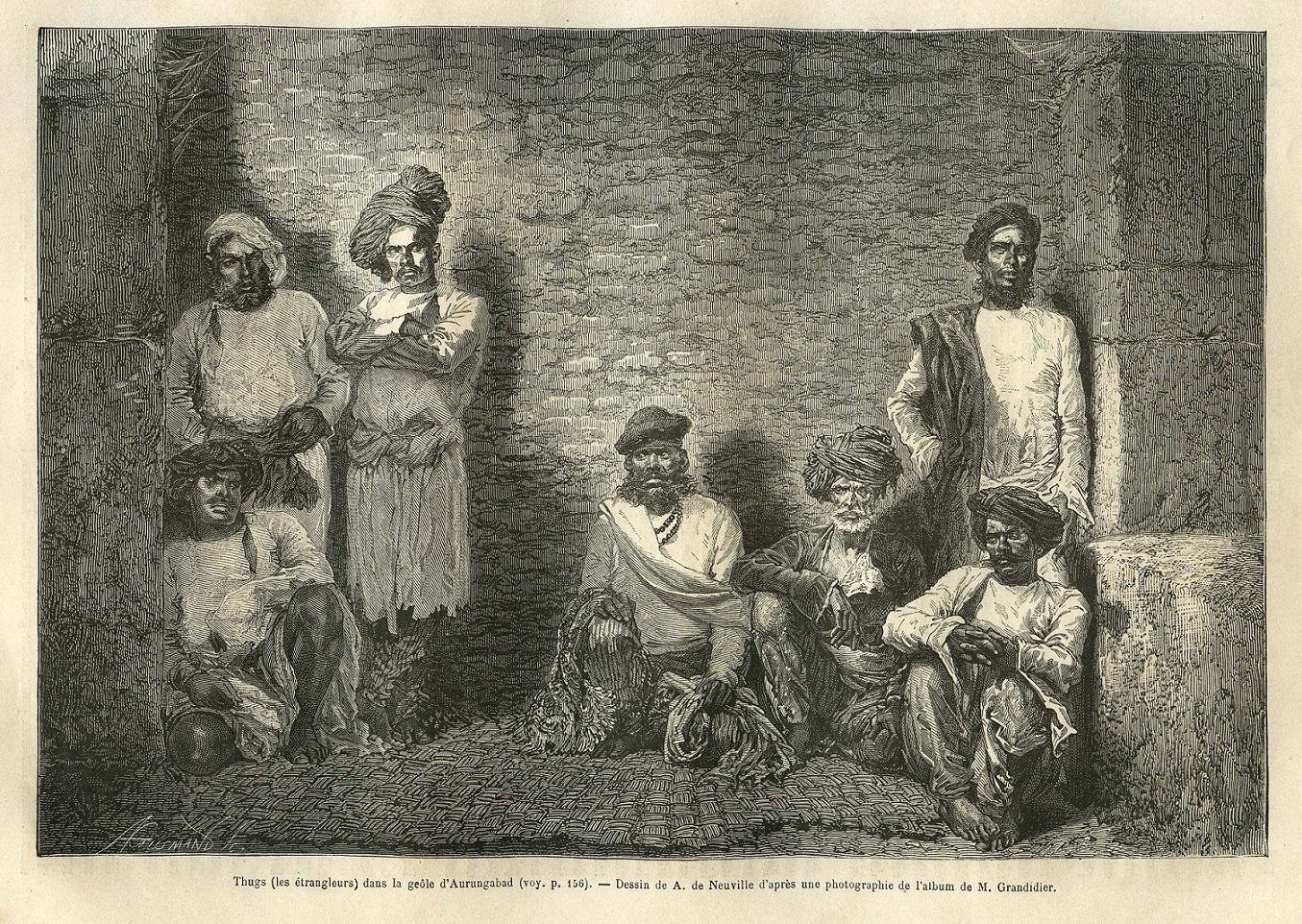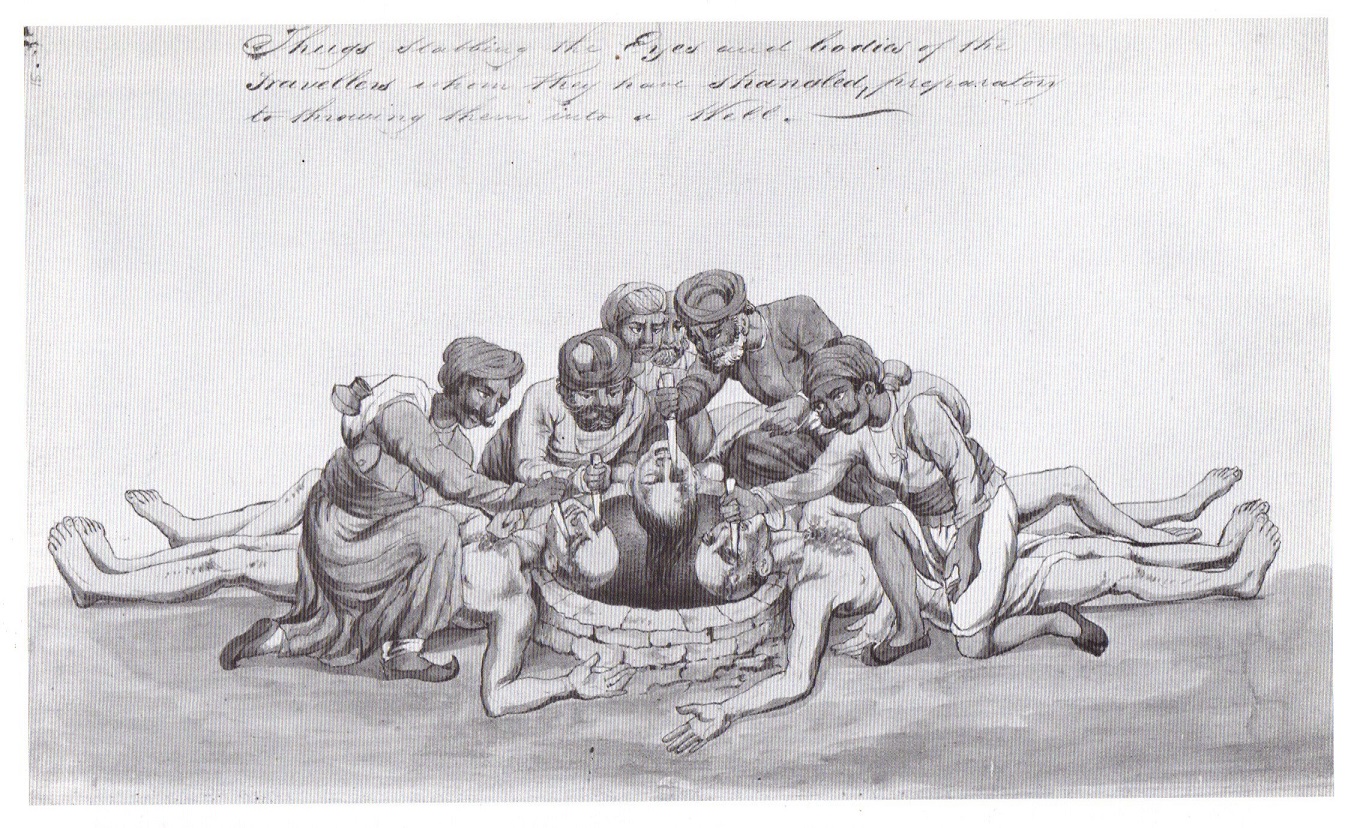Mythology can be called as the metaphorical construct that shapes the society and in turn gets shaped by it. We often use mythology to explain and understand the ideas that do not fall in the realm of logic and sense. The myths and the stories that we create often have a ripple effect on our lives and thoughts.

One such mythological story has given us a highly popular internet slang: Thug life. The word ‘thug’ has been taken from the Hindi word, ठग or Thag, that translates to a ‘cheat’. Today, the word also refers to a violent person.
According to the British colonial government’s records, the thugs were gangs of assassins who operated all around the British Indian roads during the nineteenth century, targeting wealthy travellers, employing deceit and trickery to extort any valuables. The foundation of their cult was seemingly based on the myth of Goddess Kali and the demon Raktabeeja. The legend says that Raktabeeja once tried to devour the world when Goddess Kali stopped his bloody rage. However, Raktabeeja had a boon that gave him the power to give rise to his replications or clones with every drop of his spilled blood. Goddess Kali finally decided to create two demons out of her sweat and gave them two pieces of cloth torn from her attire. She instructed the demons to kill Raktabeeja by strangulating him to death.
Inspired by this story, the thugs always killed their enemies by strangulating them with a yellow piece of cloth or rumaal. Besides being an object of worship, the rumaal was also a concealable weapon that never drew attention from their targets. They also followed a strict rule of not killing women and children. The membership to the organisation or cult was often hereditary; if not, it was the leader of the tribe who was responsible for getting the willing on board. The work was divided as per the experience one had. There were lurers or the suttas who conned the victim by gaining their trust. They posed as ordinary traders and merchants, befriending caravan of travellers. When time was right, the Suttas signalled the Buto who would usually pounce on the victim and strangle him with the rumaal. After looting the caravan, it was the duty of the Luka to get rid of the bodies by burying them without any evidence. The thugs were masters of deception, they had their own dialect called Ramasi that helped them to communicate effectively even in the presence of the victims. These thugs often had two separate sides to their lives, one with their families who were completely unaware of their oath to the brotherhood and other that was unquestioningly devoted to the conniving cult. It is said that by the time the number of thugs started dwindling considerably, they had already killed around 5,00,000 people. There is evidence that suggests that the thugs were not bound by religion but rather a common set of rituals and superstitions. The killing of Brahmans was prohibited considering their piety and purity; women were spared too as they were seen as incarnations of Goddess Kali, and children were not killed but adopted and groomed into the cult.

When the British colonised the Indian subcontinent, they obviously heard stories about the thugs from the locals. The thugs were undoubtedly seen as a danger to the crown as even the British and their goods were plundered and looted by the thugs during transit by road. The British government chose William Sleeman to pull the trigger against the thugs. Sleeman was highly intrigued by the Indian culture. After studying the behaviour and pattern of the thuggee, he launched an extensive campaign against the thugs, eventually putting an end to them. Most of the thugs ended up giving a lot of crucial information to the British government with a belief that it was Goddess Kali who has caused his arrest.
While the British government proclaimed the thugs as a murderous cult of Hindus, there were a lot of Muslims and Sikhs in the thuggee community. People also say that the so-called cult stories of the thugs were simply a product of colonial imagination and cunning, arising from the fear of India and in the eyes of the British-its vague cultural construct. Scholars still argue that being a thug had nothing to do with the religion, it was just a form of banditry that arose from the poverty enforced by the British government on the Indian masses.

Most of what we know of the thugs today comes from the records of the colonial history. With time, the line between fact and fiction dissolved. The founding myth of the thugs, as suggested by the colonial records, differs a lot from the local myths of Goddess Kali and Raktabeeja. As per the colonial view, the thugs believed that they were chosen by the Hindu Goddess Kali and it was the sacrifices they made that were supposed maintain balance in the society.
Today their reputation is rebooted by people who have adopted the phrase ‘Thug Life’ in their lives and their internet cache. Rebelliousness for some and banditry for others, it appears that ‘Thug life’ will stay in the online realms for a very long time, creating the ripples of belonging for those want to live the ‘Thug Life’.
est assumenda ut debitis. dolor nobis corporis voluptatem consequatur sapiente est in. voluptates esse aut adipisci aut quo totam est rerum. adipisci dolores quia sit placeat sint. vero quod dolorum d